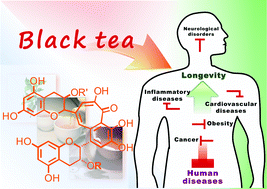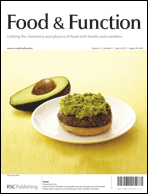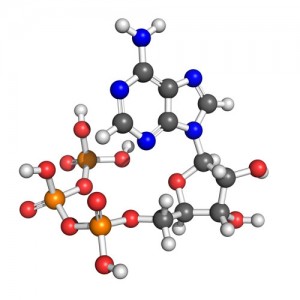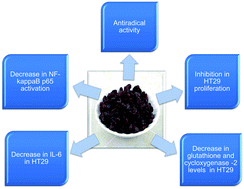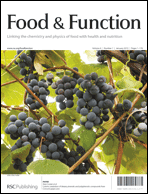 As well as adding great flavours to the foods we eat and enhancing the sensory qualities of our meals, spices also provide us with many health benefits. These include radioprotective effects as well as helping us to fight against, and prevent, diseases such as alcohol-induced hepatotoxicity, cancers and diseases of the bowel.
As well as adding great flavours to the foods we eat and enhancing the sensory qualities of our meals, spices also provide us with many health benefits. These include radioprotective effects as well as helping us to fight against, and prevent, diseases such as alcohol-induced hepatotoxicity, cancers and diseases of the bowel.
Read about some of the latest research in this area from selection of articles published in Food & Function below – all free to access until the 19th March 2013!
Dietary spices as beneficial modulators of lipid profile in conditions of metabolic disorders and diseases, Krishnapura Srinivasan, Food Funct., 2013, DOI: 10.1039/C2FO30249G
Curcumin, an active component of turmeric in the prevention and treatment of ulcerative colitis: preclinical and clinical observations, Manjeshwar Shrinath Baliga, Nandhini Joseph, Marikunte V. Venkataranganna, Arpit Saxena, Venkatesh Ponemone and Raja Fayad, Food Funct., 2012, 3, 1109-1117
Radioprotective effects of Zingiber officinale Roscoe (Ginger): past, present and future, Manjeshwar Shrinath Baliga, Raghavendra Haniadka, Manisha Maria Pereira, Karadka Ramdas Thilakchand, Suresh Rao and Rajesh Arora, Food Funct., 2012, 3, 714-723
Dietary agents in the prevention of alcohol-induced hepatotoxicty: preclinical observations, Arnadi Ramachandrayya Shivashankara, Aysha Azmidah, Raghavendra Haniadka, Manoj Ponadka Rai, Rajesh Arora and Manjeshwar Shrinath Baliga, Food Funct., 2012, 3, 101-109
Inhibitory effects of 1,3-bis-(2-substituted-phenyl)-propane-1,3-dione, β-diketone structural analogues of curcumin, on chemical-induced tumor promotion and inflammation in mouse skin, Chuan-Chuan Lin, Yue Liu, Chi-Tang Ho and Mou-Tuan Huang, Food Funct., 2011, 2, 78-83
Stay up to date with the latest developments from Food & Function by signing up for free table of contents alerts
